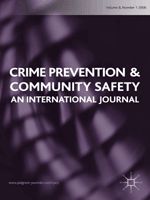
Crime Prevention & Community Safety
Scope & Guideline
Fostering collaboration for impactful safety initiatives.
Introduction
Aims and Scopes
- Crime Prevention Strategies:
The journal explores various strategies and frameworks aimed at preventing crime, including community policing, crime prevention through environmental design (CPTED), and evidence-based practices. - Impact of Social Factors on Crime:
Research published in the journal frequently examines how social dynamics, such as community engagement, social isolation, and demographic factors, influence crime rates and victimization. - Emerging Threats and Innovative Responses:
The journal highlights new and emerging types of crime, such as cybercrime and child exploitation, and discusses innovative approaches and countermeasures to address these threats. - Global Perspectives on Crime:
It features studies from various geographical contexts, offering insights into crime prevention practices and challenges faced by different communities around the world. - Interdisciplinary Research Approaches:
The journal encourages interdisciplinary research that integrates criminology with fields such as public health, urban planning, sociology, and law enforcement.
Trending and Emerging
- Cybercrime and Digital Victimization:
There is a growing emphasis on cybercrime, including studies on cyberbullying and digital fraud, reflecting the increasing relevance of technology in contemporary crime. - Community Resilience and Safety:
Research focusing on community resilience, particularly in the context of mass shootings and social unrest, highlights the importance of community engagement in enhancing safety. - Environmental Criminology:
An emerging trend is the application of environmental criminology principles to urban planning and design, aiming to reduce crime through thoughtful spatial considerations. - Health and Crime Prevention:
The intersection of public health and crime prevention is gaining traction, with studies exploring the impact of health systems on youth violence and domestic abuse. - Diversity and Intersectionality in Victimology:
There is an increasing focus on understanding victimization experiences across diverse populations, including LGBTQ+ communities and marginalized groups, emphasizing the need for inclusive approaches to safety.
Declining or Waning
- Traditional Crime Prevention Models:
There has been a noticeable decrease in publications focusing solely on traditional crime prevention models, such as community watch programs, as newer, more innovative approaches gain traction. - Focus on Rural Crime:
Research specifically addressing crime prevention in rural areas has diminished, possibly reflecting a shift towards urban crime dynamics and the complexities involved in urban settings. - Studies on Gun Control:
There appears to be a waning interest in studies directly linking fear of crime with attitudes towards gun control, suggesting a shift in the discourse towards broader safety and security measures. - Victimology of Common Crimes:
Papers centered on victimology related to common street crimes have become less frequent, indicating a potential narrowing of focus towards more complex victimization issues such as cyber and organized crime. - Historical Crime Analysis:
Research examining historical crime trends and their implications for current practices has decreased, possibly as contemporary issues take precedence in the journal's scope.
Similar Journals

Trends in Organized Crime
Navigating the Evolving Landscape of Organized CrimeTrends in Organized Crime, published by SPRINGER, is a premier journal dedicated to the exploration and analysis of organized crime phenomena. With an impressive impact factor and ranked in the Q1 category for Law, this journal reflects the highest echelon of scholarly work, positioning itself at the forefront of legal and social sciences research. Established in 1995 and extending its impact through 2024, the journal serves as a crucial resource for academics, practitioners, and policymakers seeking to understand the complexities of organized crime and its implications on society. While not an Open Access journal, it provides robust access options for scholarly articles, making it a vital tool for those engaged in legal studies and criminology. By fostering interdisciplinary dialogues, Trends in Organized Crime aims to illuminate contemporary issues, promote innovative methodologies, and enhance the collective understanding of criminal organizations globally.

Crime and Justice-A Review of Research
Unveiling contemporary issues in crime and justice research.Crime and Justice: A Review of Research is a leading scholarly journal published by the University of Chicago Press, dedicated to advancing knowledge in the fields of sociology and political science, specifically through the lens of crime and justice studies. With an ISSN of 0192-3234 and an E-ISSN of 2153-0416, this academic journal offers a distinguished platform for researchers, practitioners, and students to explore contemporary issues, methodologies, and theoretical advancements within the domain. Ranked in the Q2 category for both sociology and political science as of 2023, it has gained recognition with an impressive Scopus rank of #150 out of 1466 in its field, placing it in the 89th percentile. The journal publishes comprehensive reviews and research articles that inform best practices and policies in crime prevention, law enforcement, and social justice, fostering a deeper understanding of the complexities surrounding crime and societal responses. Though it is not an open-access journal, the insightful research it presents is indispensable for academic discourse and practical application in addressing the multifaceted challenges of crime and justice in contemporary society.
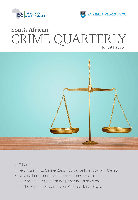
South African Crime Quarterly-SACQ
Championing research that informs and transforms justice systems.South African Crime Quarterly (SACQ) is an esteemed open-access journal dedicated to the comprehensive examination of crime and justice issues in South Africa. Published by the Institute for Security Studies, SACQ aims to provide a platform for researchers, practitioners, and policymakers to disseminate innovative research, case studies, and theoretical discussions that address the complexities of crime in the region. Since its transition to open access in 2015, the journal has fostered a wider dissemination of knowledge, promoting accessibility for students and professionals alike. With an ISSN of 1991-3877, SACQ stands out as an essential resource, driving informed dialogue and enhancing the understanding of security challenges in South Africa. The journal encourages submissions that contribute to evidence-based practices and policies, making it a vital tool for those committed to addressing crime and improving safety within communities.

Asian Journal of Criminology
Exploring the Depths of Crime and Justice in AsiaAsian Journal of Criminology, published by SPRINGER, stands as a pivotal platform for scholarly communication within the field of criminology, boasting a notable impact factor and achieving a distinguished Q1 ranking in Law for 2023. Located in the Netherlands, this journal addresses the complexities of crime and justice in Asian contexts, fostering interdisciplinary discourse between researchers, practitioners, and policymakers. Since its inception in 2006 and continuing through to 2024, the journal has published a range of high-quality articles that explore theoretical frameworks, empirical research, and practical applications in criminology. Although the journal is not open access, it remains accessible through academic libraries and institutions, ensuring its wide reach among scholars and students. With a Scopus ranking of 143 out of 1025 in the field of Social Sciences Law, placing it in the 86th percentile, the Asian Journal of Criminology is essential for anyone looking to stay at the forefront of criminological research and its application in diverse societal contexts.

Salus Journal
Transforming Health Practices with Accessible KnowledgeSalus Journal, published by Charles Sturt University, is an esteemed open-access journal dedicated to advancing the field of health sciences. Established in 2013, this journal emphasizes the dissemination of innovative research and critical analyses that influence evidence-based practices in healthcare and wellness. With its commitment to making high-quality research accessible to a global audience, Salus Journal plays a crucial role in fostering academic collaboration and dialogue among researchers, professionals, and students alike. Its focus on interdisciplinary approaches encourages contributions across various domains of health, ensuring that it remains a vital resource for the community. The journal is easily accessible online, promoting the visibility and impact of published works. For more information and to stay updated with the latest research in health sciences, visit their website and explore the wealth of knowledge available.
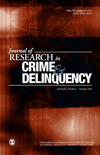
JOURNAL OF RESEARCH IN CRIME AND DELINQUENCY
Advancing the understanding of crime and its complexities.JOURNAL OF RESEARCH IN CRIME AND DELINQUENCY, published by SAGE PUBLICATIONS INC, stands as a premier outlet for groundbreaking research in the fields of crime and delinquency. With an ISSN of 0022-4278 and an E-ISSN of 1552-731X, this esteemed journal has been disseminating vital knowledge since 1964 and continues to do so with a forward-looking perspective extending to 2024. Renowned for its impactful contributions, the journal ranks in the Q1 quartile of Social Psychology for 2023, reflecting its status among the top-tier publications in the field with a Scopus ranking of 66/310, placing it in the 78th percentile. Though it is not an Open Access journal, it remains a crucial resource for researchers, professionals, and students seeking to deepen their understanding of criminal behavior and social responses. With articles that address current issues and trends, JOURNAL OF RESEARCH IN CRIME AND DELINQUENCY plays an essential role in shaping policies and practices within the criminal justice system and academia.
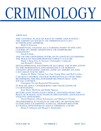
CRIMINOLOGY
Innovating Theories and Practices in Criminology.CRIMINOLOGY, published by WILEY, stands as a leading journal in the fields of Law and Forensic Medicine, with an impressive impact factor that places it in the Q1 quartile for both categories. With its ISSN 0011-1384 and E-ISSN 1745-9125, this esteemed journal has been at the forefront of advancing knowledge and understanding in criminological theories and practices since its inception in 1963, and continues to be relevant through 2024. As of 2023, CRIMINOLOGY is ranked #19 in Social Sciences_ Law and #19 in Medicine_ Pathology and Forensic Medicine, positioning it within the top 2% of its field, making it an essential resource for researchers and professionals alike. Despite not offering open access, it provides invaluable insights into the complexities of crime, law enforcement, and societal impacts, thus shaping the future of criminological research and policy.

Russian Journal of Criminology
Advancing criminological discourse in a unique Russian context.Russian Journal of Criminology (ISSN: 2500-4255, E-ISSN: 2500-1442) is an esteemed academic publication hosted by Baikal State University, dedicated to advancing the field of criminology. As a pivotal resource within the domains of law and social sciences, this journal offers a platform for scholars to disseminate innovative research, critical analyses, and comprehensive studies relevant to contemporary criminological issues. Although coverage has been discontinued in Scopus from 2020, the journal continues to provide valuable insights essential for professionals and researchers alike, with a focus on sociological and political perspectives on crime and justice systems. With its unique Russian context, the journal encourages a diverse array of submissions, facilitating a cross-cultural dialogue on criminology that contributes to global scholarship. Despite its current ranking of 478 out of 685 in law and 908 out of 1243 in sociology and political science, the Russian Journal of Criminology remains a vital resource for those seeking to explore the complexities of criminological phenomena and to further the academic discourse in this critical area of study.

International E-Journal of Criminal Sciences
Exploring the Frontiers of Criminal Science KnowledgeWelcome to the International E-Journal of Criminal Sciences, a distinguished platform dedicated to the rigorous exploration of contemporary issues within the field of criminal sciences. Published by the DMS INT RESEARCH CENTRE, this journal aims to disseminate high-quality research and critical analyses that foster a deeper understanding of criminal behavior, law enforcement strategies, justice systems, and related societal impacts. With its commitment to open access, it ensures that knowledge is readily available to a global audience, promoting inclusivity and academic collaboration across borders. Although specific metrics like impact factor and H-index have yet to be established, its relevance and contribution to the discourse on criminal sciences remain significant. Researchers, professionals, and students are invited to engage with the journal’s valuable insights, as it strives to become a leading resource for innovative thought and evidence-based solutions in the evolving landscape of criminal science.
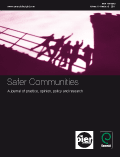
Safer Communities
Exploring the nexus of law, health, and community safety.Safer Communities is a distinguished academic journal published by Emerald Group Publishing Ltd, focusing on the intersections of community safety, law, public health, and safety research. Since its inception in 2002, this journal has offered a platform for rigorous empirical studies, theoretical discussions, and insightful reviews that aim to enhance safety standards and practices globally. With an impressive Scopus ranking in various categories, including Law and Community and Home Care, the journal consistently demonstrates its relevance and critical contribution to these multidisciplinary fields. Operating within the United Kingdom, Safer Communities invites contributions that address contemporary issues affecting community safety, making it a vital resource for researchers, practitioners, and students alike. The journal is committed to fostering accessible, high-quality research without the limitations of open access, thus serving a wide audience eager to advance their understanding of safety dynamics in various contexts. With its ongoing commitment to academic excellence and community engagement, Safer Communities remains a pivotal journal for those dedicated to enhancing societal safety and well-being.